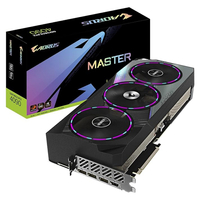I’m seriously thinking about selling the best GPU on the planet — here’s why
I love my Nvidia RTX 4090 rig, but...

I recently dissuaded a good pal of mine from upgrading their GPU, which has to be a first for me. After all, I freakin' love upgrading graphics cards... unquestionably too often, to my only minor shame.
Said graphics card doesn’t even exist yet, either! Although the as yet announced Nvidia GeForce RTX 5090 GPU could yet ship before the end of 2024, my friend would be using it on a 1440p (2560 x 1440) 27-inch monitor. Meaning a card of such colossal power would be wasted on such a small screen.
That’s got me thinking about the current king of graphics cards: Nvidia’s RTX 4090. And to be more specific, how I’ve not been using mine as much of late, even though it powers one of the best gaming PCs that I’m lucky to own.
I first purchased Inno3D's version of Team Green’s mighty GPU when it launched back in October 2022. Though Nvidia’s official price tag for the most powerful consumer card you can currently buy initially retailed for $1,599, it’s rarely actually been sold for that lofty price tag. Indeed, various third-party manufacturers continue to sell the RTX 4090 for closer to $2,000 two years after its release, and it rarely goes on sale. Although…
Right now The Gigabyte Aorus GeForce RTX 4090 GPU is on sale at Amazon for $1,804. That’s hardly an Earth-shattering discount considering the list price is $1,899 (meaning you’re only saving $95). But hey, a deal is a deal, right?
Gigabyte Aorus GeForce RTX 4090 GPU: was $1,899 now $,1804 @ Amazon
Gigabyte’s RTX 4090 GPU has Nvidia Lovelace Streaming Multiprocessors to double power efficiency, while also boasting 3rd Gen RT cores to improve ray tracing performance. The fact it also houses 24GB of RAM makes it a monster when it comes to processing large 4K video files.
The fact that I’ve been using my RTX 4090 desktop a whole lot less of late can squarely be blamed on the amazing Asus ROG Zephyrus G14 (2024). Outside of the incredible LG G3 OLED TV, there’s not a product I’ve written more about since I joined Tom’s Guide a shade over a year ago. And Asus’ astonishing gaming laptop only came out in February!
It’s just the absolute best. I went for the top-tier RTX 4070 version, which also packs in an AMD Ryzen 9 8945HS CPU and 32GB of DDR5 RAM. When it comes to taking on the best PC games, it absolutely slays them. Throw in an essential $7 Steam app that can triple the frame rates of games thanks to a canny form of supersampling, and I can often reach between 80-120 fps in many modern titles.
The latest Zephyrus G14 is also only one of two OLED gaming laptops on the market that currently supports Nvidia’s frame-smoothing G-Sync tech, and even my ultra-obsessive peepers can’t tell when a game dips.
Builders beware

There are a couple of other factors that I’ve talked about on the site before that also contribute to why the G14 is eating up my evening hours over my mega rig. As much as I love my high-end desktop — which aside from the RTX 4090, has an AMD Ryzen 7800X3D CPU, 32GB of DDR5 RAM and a frankly ludicrously fast 4TB SSD that can reach read speeds of up to 11,700MBps — when it comes to quitting time, I often simply don’t want to spend any more time in my home office where my desktop resides.
Sure, buying a fantastic PC stand on wheels allows me to roll my absurdly hefty 65 pound PC through to my living room with relative ease. Yet that simple pushing process weirdly aggravates my husky, so I’ve stopped gaming on my desktop in my lounge as much of late.
There’s also the not inconsiderable issue that stuff with home-built rigs can go wrong all the damn time totally out of the blue. Sometimes it will be a random “Blue Screen of Death”, while occasionally my PC will just straight up force to boot, requiring a mildly annoying CMOS reset. Suffice to say, as you can see in the photo a few paragraphs above, I’ve had to tinker with my PC a looooot. Also, what reasonable person owns that many screwdrivers?
Man-cub alive is the G14 good

The ROG Zephyrus G14 isn’t just great for gaming — and holy cow is it ever — it’s also a superb Netflix machine or a laptop you should consider buying if you’re a fan of the best Disney Plus movies (hence the shot from 2016’s live-action remake of “The Jungle Book” above). Paired with a decent set of the best Bluetooth speakers, streaming movies and shows on the G14 is a joy.
Despite owning Asus’ wonder of a laptop for less than a month, it’s already become my go-to device when I want to chill out in the evenings. The flipside of that is my LG OLED, gaming desktop and M4 iPad Pro are getting a whole lot less love than they would be if I hadn’t bought the G14.
I’ve suddenly become one of those people who the likes of all-time great filmmakers like Spielberg and Scorcese would despise, as I’ve watched more content on my new laptop recently than my 77-inch OLED TV. I can only offer the two legendary Hollywood helmers my most grumbling of apologies.
So am I going to sell my RTX 4090 anytime soon now that the Zephrus G14 and its wonderful 2.8K (2880 x 1800) OLED display has captured my heart? Probably not. I still love having a gaming PC, and thanks to how seamlessly cloud saving works on Steam, I’ve got the option of playing the likes of perhaps my favorite video game of all time — Red Dead Redemption 2, in case you were wondering — seamlessly across my gaming desktop, the G14 and my Steam Deck OLED.
To wrap things up in semi-succinct fashion, why the hell did I wait so long to buy my first gaming laptop?!
More from Tom's Guide
Sign up to get the BEST of Tom's Guide direct to your inbox.
Get instant access to breaking news, the hottest reviews, great deals and helpful tips.

Dave is a computing editor at Tom’s Guide and covers everything from cutting edge laptops to ultrawide monitors. When he’s not worrying about dead pixels, Dave enjoys regularly rebuilding his PC for absolutely no reason at all. In a previous life, he worked as a video game journalist for 15 years, with bylines across GamesRadar+, PC Gamer and TechRadar. Despite owning a graphics card that costs roughly the same as your average used car, he still enjoys gaming on the go and is regularly glued to his Switch. Away from tech, most of Dave’s time is taken up by walking his husky, buying new TVs at an embarrassing rate and obsessing over his beloved Arsenal.
-
xrnzrx I had the same sentiments about gaming in my office, so my solution was to set up streaming from my PC to my living room TV using ethernet and a mini PC. Sunshine + Moonlight offers an essentially latency-free experience at 4k60 and now my PS5 is basically collecting dust.Reply -
KyloRon I’ve come to terms with the notion that media outlets have to generate tons of content to maintain foot traffic, and that 99% of content is just an advertisement. With that being said, the author (you) should be ashamed of thyself for not only penning and publishing this “piece,” I urge you to please unplug and set aside some time to look inward and self-reflect.Reply
Does this friend actually exist? If this theoretical person does - breathe, eat, and poo like the rest of us - and can afford a new graphics card, to the exorbitant dollar amount that you suggest, then he or she can just as likely afford one of the many OLED displays on the market (which you infallibly did not fail to mention your proclivities to self-emitting diode displays).
Besides the fact that this post is just an excuse for some bizarre, consumer electronics journalistic onanism - how can you suggest that a mobile 4070 RTX jammed inside a 14-inch notebook - produced by the now well-established jester of quality control and king of predatory tactics towards consumers, ASUS - is somehow even REMOTELY comparable to a desktop with a 4090 + a modern CPU.
I don’t even have to look up the max power draw of the CPU or GPU in that exact device, there exists no reality in which a tiny little device like that is going to be adequately cooled, let alone would it be designed to provide enough power to even max out the power limits of said processing units. Regardless, 4K UHD on a 14 inch panel, OLED or not, is an absolute joke. You are an asinine fool, and I pity you if you actually believe any of what you’ve written. Even 2K QHD on such a tiny display is unnecessary, but sure, it looks nicer than FHD. I own a GE67HX UGS laptop, just under 16” 2K OLED panel @ 240hz, 3070 TI, 12th gen i9 HX, albeit no G-sync - and this is my favorite part of your garbage writing, claiming that your magical eyes + magical optical nerves can’t live without - I’ve spent countless hours on various rigs and displays, ranging from 1080p 144hz VA panel + 2080 TI, 1440p 144hz VA panel + 3060/3070, 4K 144hz IPS panel + 3090 TI, 4K 120hz LG C1 + 4090; whether G-sync was enabled or not, I could not once perceive or have any notion in knowing if it was actually enabled unless I opened NVIDIA control panel. Take a wild guess as to my experience with a G-sync less OLED laptop? I might as well just claim it has G-sync because it performs and feels exactly like every display I’ve owned with G-sync.
As for your desktop rig, either you’re one unlucky individual, or you just have no idea how to properly troubleshoot PCs. And no desktop built within reasonable means weighs 65 lbs; based on your listing of parts, even with an eATX board and a full-size tower, 50 lbs is generous.
Only a monkey would choose a little iPad sized display over a top of the line desktop.

